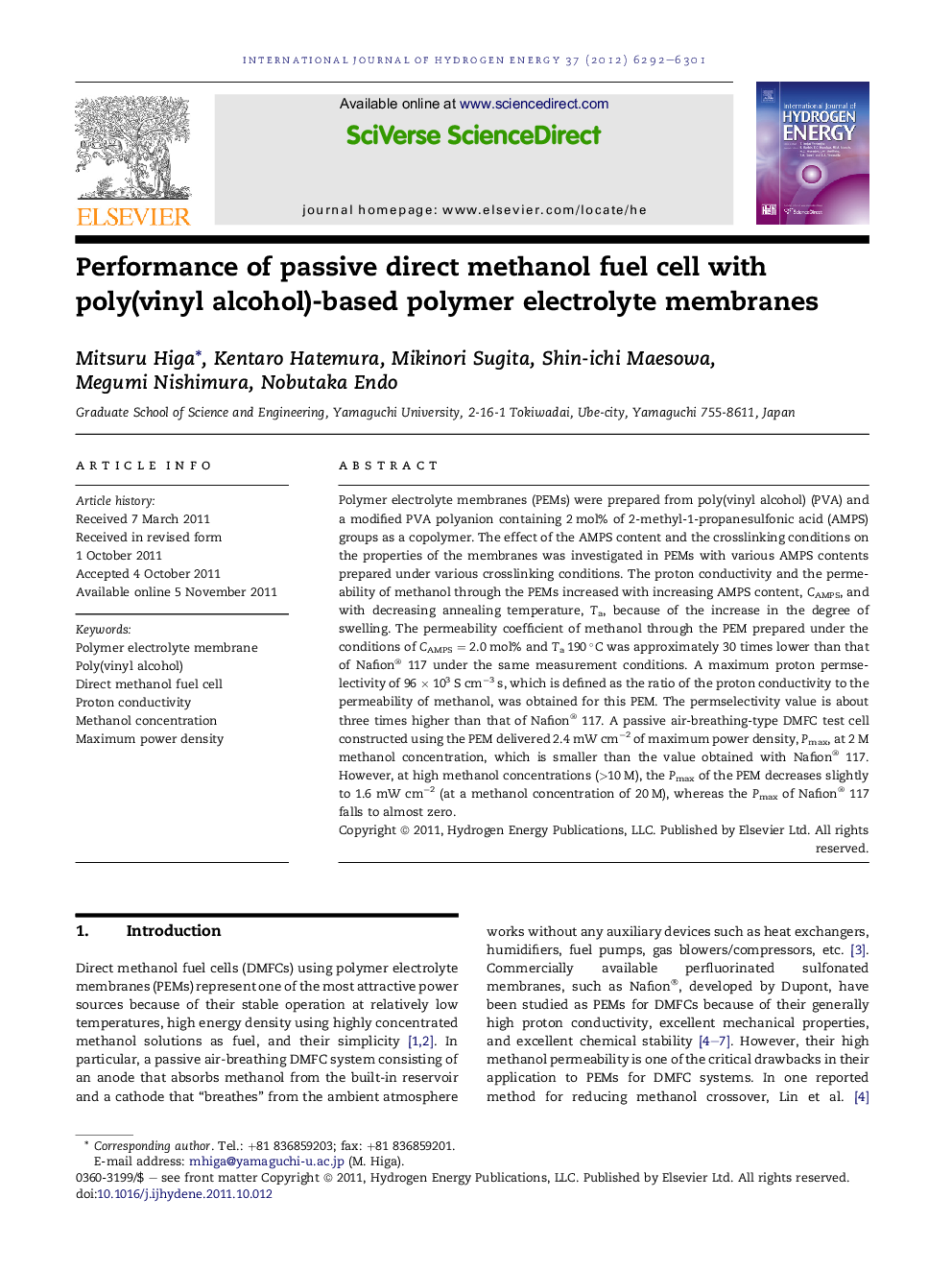| Article ID | Journal | Published Year | Pages | File Type |
|---|---|---|---|---|
| 1276926 | International Journal of Hydrogen Energy | 2012 | 10 Pages |
Polymer electrolyte membranes (PEMs) were prepared from poly(vinyl alcohol) (PVA) and a modified PVA polyanion containing 2 mol% of 2-methyl-1-propanesulfonic acid (AMPS) groups as a copolymer. The effect of the AMPS content and the crosslinking conditions on the properties of the membranes was investigated in PEMs with various AMPS contents prepared under various crosslinking conditions. The proton conductivity and the permeability of methanol through the PEMs increased with increasing AMPS content, CAMPS, and with decreasing annealing temperature, Ta, because of the increase in the degree of swelling. The permeability coefficient of methanol through the PEM prepared under the conditions of CAMPS = 2.0 mol% and Ta 190 °C was approximately 30 times lower than that of Nafion® 117 under the same measurement conditions. A maximum proton permselectivity of 96 × 103 S cm−3 s, which is defined as the ratio of the proton conductivity to the permeability of methanol, was obtained for this PEM. The permselectivity value is about three times higher than that of Nafion® 117. A passive air-breathing-type DMFC test cell constructed using the PEM delivered 2.4 mW cm−2 of maximum power density, Pmax, at 2 M methanol concentration, which is smaller than the value obtained with Nafion® 117. However, at high methanol concentrations (>10 M), the Pmax of the PEM decreases slightly to 1.6 mW cm−2 (at a methanol concentration of 20 M), whereas the Pmax of Nafion® 117 falls to almost zero.
► PVA-based PEMs for DMFC have been prepared. ► The PEMs have methanol permeabilities about 30 times lower than that of Nafion® 117. ► The PEMs have proton permselectivities about three times higher than that of Nafion® 117. ► A passive-type DMFC cell with the PEM shows a maximum power density of 2.4 mW cm−2. ► The PEMs have higher power densities than Nafion® 117 at high methanol concentrations.
